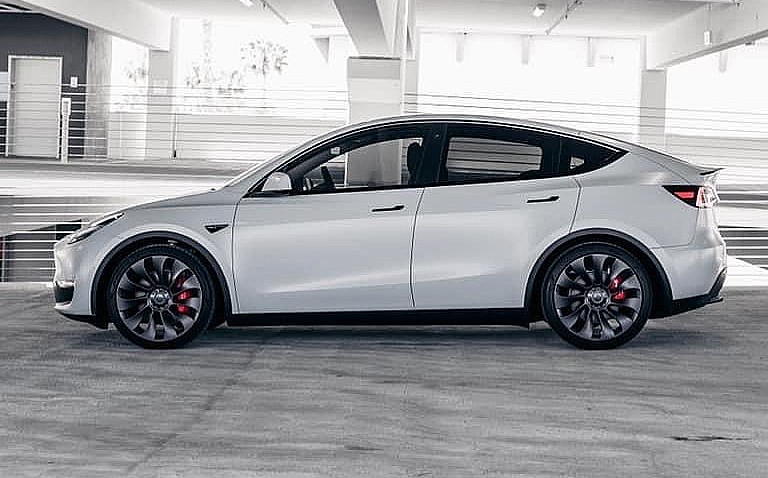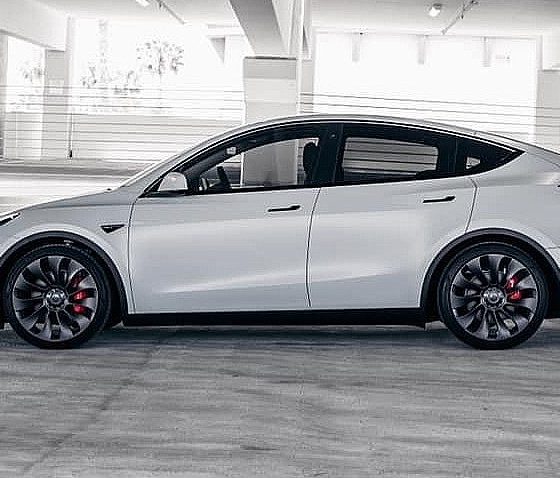

News
Tesla Autopilot ‘easily tricked’ by Consumer Reports in bizarre test
Consumer Reports claims to have shown that Tesla Autopilot can be “easily tricked” into driving without anyone in the driver’s seat. The test process was extremely bizarre and required certain items that most drivers would never have in their vehicles.
CR released a report on April 22nd entitled, “CR Engineers Show a Tesla Will Drive With No One in the Driver’s Seat.” The test was in response to the recent and very public Tesla Model S crash in Texas, where two men, unfortunately, passed away after their all-electric sedan crashed violently into a tree at a high speed. Investigators are attempting to determine whether the vehicle was “driverless,” a claim made by several mainstream media outlets. CEO Elon Musk chimed in just days after the crash and the very public coverage of it to say that it would be impossible for Autopilot to function on the road where the crash occurred due to the lack of road lines, which are required to initiate the use of Basic Autopilot.
Tesla alleged “driverless” crash in Texas: What is known so far
The CR test required the vehicle, a Tesla Model Y, to be in motion, and engineers then engaged Autopilot and set the speed dial to 0, which brought the car to a stop. Next, Jake Fisher, CR’s Senior Director of Auto Testing, placed a “small, weighted chain on the steering wheel, to simulate the weight of a driver’s hand, and slid over into the front passenger seat without opening any of the vehicle’s doors, because that would disengage Autopilot.” The Autopilot speed was then adjusted so that the vehicle would accelerate from its stationary position. The car managed to drive up and down the half-mile lane of the CR test track, although nobody was in the seat or controlling the vehicle. “It was a bit frightening when we realized how easy it was to defeat the safeguards, which we proved were clearly insufficient,” Fisher said. The engineers encouraged nobody to try the experiment at home, but who will have a custom weighted chain sitting around to experiment with anyway?
“In our evaluation, the system not only failed to make sure the driver was paying attention, but it also couldn’t tell if there was a driver there at all,” Fisher added, but he wasn’t done throwing shade at Tesla. “Tesla is falling behind other automakers like GM and Ford that, on models with advanced driver assist systems, use technology to make sure the driver is looking at the road.” GM’s SuperCruise and Ford’s recently released BlueCruise are what Fisher is referencing, but the comparisons don’t really add up.
Tesla Autopilot has over 23 billion real-world miles of data that is stored in a Neural Network to improve performance. With every mile driven, Tesla’s semi-autonomous driving functionalities become more robust, more precise, and more adaptable to human behavior. Ford and GM have accumulated only a fraction of these statistics. Tesla, meanwhile, recently reported its Q1 2021 Safety Report, where it found that Autopilot is nearly 10 times safer than human driving.
Tesla’s Q1 2021 accident data shows Autopilot is closing in on being 10X safer than humans
The test performed by CR is extremely bizarre because people would not normally have all of these things in their vehicle or even in their possession, to begin with. Tesla maintains that drivers are responsible for remaining attentive during the entirety of their driving experience. The company has never claimed to have released a program capable of Level 5 autonomy where a driver needs to pay no attention to the road or the vehicle’s surroundings. Yet, Tesla’s very-publicized crash raises questions from those who have a historical distaste for the company and its products. Consumer Reports has not been keen on Tesla in the past. They have indicated that GM’s SuperCruise, despite being less effective or safe than Autopilot based on data, holds a commanding lead over Tesla’s semi-autonomous driving program.
It is worth noting that Tesla has several safety thresholds that would prohibit anyone from attempting to let the vehicle drive itself. These include a steering wheel monitoring system, which will bring the car to a complete stop if the driver is not holding it. The system also requires a driver to be in the seat to function, and the company recently revoked FSD software from several drivers who were abusing the program by being inattentive. More safety features, like a facial features recognition camera, will monitor the driver’s eyes and face to ensure they are paying attention to the road.
What are your thoughts on the CR study? Let us know in the comments, or let me know at @KlenderJoey on Twitter. You can email me at joey@teslarati.com as well.

News
Tesla starts showing how FSD will change lives in Europe
Local officials tested the system on narrow country roads and were impressed by FSD’s smooth, human-like driving, with some calling the service a game-changer for everyday life in areas that are far from urban centers.

Tesla has launched Europe’s first public shuttle service using Full Self-Driving (Supervised) in the rural Eifelkreis Bitburg-Prüm region of Germany, demonstrating how the technology can restore independence and mobility for people who struggle with limited transport options.
Local officials tested the system on narrow country roads and were impressed by FSD’s smooth, human-like driving, with some calling the service a game-changer for everyday life in areas that are far from urban centers.
Officials see real impact on rural residents
Arzfeld Mayor Johannes Kuhl and District Administrator Andreas Kruppert personally tested the Tesla shuttle service. This allowed them to see just how well FSD navigated winding lanes and rural roads confidently. Kruppert said, “Autonomous driving sounds like science fiction to many, but we simply see here that it works totally well in rural regions too.” Kuhl, for his part, also noted that FSD “feels like a very experienced driver.”
The pilot complements the area’s “Citizen Bus” program, which provides on-demand rides for elderly residents who can no longer drive themselves. Tesla Europe shared a video of a demonstration of the service, highlighting how FSD gives people their freedom back, even in places where public transport is not as prevalent.
What the Ministry for Economic Affairs and Transport says
Rhineland-Palatinate’s Minister Daniela Schmitt supported the project, praising the collaboration that made this “first of its kind in Europe” possible. As per the ministry, the rural rollout for the service shows FSD’s potential beyond major cities, and it delivers tangible benefits like grocery runs, doctor visits, and social connections for isolated residents.
“Reliable and flexible mobility is especially vital in rural areas. With the launch of a shuttle service using self-driving vehicles (FSD supervised) by Tesla in the Eifelkreis Bitburg-Prüm, an innovative pilot project is now getting underway that complements local community bus services. It is the first project of its kind in Europe.
“The result is a real gain for rural mobility: greater accessibility, more flexibility and tangible benefits for everyday life. A strong signal for innovation, cooperation and future-oriented mobility beyond urban centers,” the ministry wrote in a LinkedIn post.
News
Tesla China quietly posts Robotaxi-related job listing
Tesla China is currently seeking a Low Voltage Electrical Engineer to work on circuit board design for the company’s autonomous vehicles.

Tesla has posted a new job listing in Shanghai explicitly tied to its Robotaxi program, fueling speculation that the company is preparing to launch its dedicated autonomous ride-hailing service in China.
As noted in the listing, Tesla China is currently seeking a Low Voltage Electrical Engineer to work on circuit board design for the company’s autonomous vehicles.
Robotaxi-specific role
The listing, which was shared on social media platform X by industry watcher @tslaming, suggested that Tesla China is looking to fill the role urgently. The job listing itself specifically mentions that the person hired for the role will be working on the Low Voltage Hardware team, which would design the circuit boards that would serve as the nervous system of the Robotaxi.
Key tasks for the role, as indicated in the job listing, include collaboration with PCB layout, firmware, mechanical, program management, and validation teams, among other responsibilities. The role is based in Shanghai.
China Robotaxi launch
China represents a massive potential market for robotaxis, with its dense urban centers and supportive policies in select cities. Tesla has limited permission to roll out FSD in the country, though despite this, its vehicles have been hailed as among the best in the market when it comes to autonomous features. So far, at least, it appears that China supports Tesla’s FSD and Robotaxi rollout.
This was hinted at in November, when Tesla brought the Cybercab to the 8th China International Import Expo (CIIE) in Shanghai, marking the first time that the autonomous two-seater was brought to the Asia-Pacific region. The vehicle, despite not having a release date in China, received a significant amount of interest among the event’s attendees.
Elon Musk
Elon Musk and Tesla AI Director share insights after empty driver seat Robotaxi rides
The executives’ unoccupied tests hint at the rapid progress of Tesla’s unsupervised Robotaxi efforts.

Tesla CEO Elon Musk and AI Director Ashok Elluswamy celebrated Christmas Eve by sharing personal experiences with Robotaxi vehicles that had no safety monitor or occupant in the driver’s seat. Musk described the system’s “perfect driving” around Austin, while Elluswamy posted video from the back seat, calling it “an amazing experience.”
The executives’ unoccupied tests hint at the rapid progress of Tesla’s unsupervised Robotaxi efforts.
Elon and Ashok’s firsthand Robotaxi insights
Prior to Musk and the Tesla AI Director’s posts, sightings of unmanned Teslas navigating public roads were widely shared on social media. One such vehicle was spotted in Austin, Texas, which Elon Musk acknowleged by stating that “Testing is underway with no occupants in the car.”
Based on his Christmas Eve post, Musk seemed to have tested an unmanned Tesla himself. “A Tesla with no safety monitor in the car and me sitting in the passenger seat took me all around Austin on Sunday with perfect driving,” Musk wrote in his post.
Elluswamy responded with a 2-minute video showing himself in the rear of an unmanned Tesla. The video featured the vehicle’s empty front seats, as well as its smooth handling through real-world traffic. He captioned his video with the words, “It’s an amazing experience!”
Towards Unsupervised operations
During an xAI Hackathon earlier this month, Elon Musk mentioned that Tesla owed be removing Safety Monitors from its Robotaxis in Austin in just three weeks. “Unsupervised is pretty much solved at this point. So there will be Tesla Robotaxis operating in Austin with no one in them. Not even anyone in the passenger seat in about three weeks,” he said. Musk echoed similar estimates at the 2025 Annual Shareholder Meeting and the Q3 2025 earnings call.
Considering the insights that were posted Musk and Elluswamy, it does appear that Tesla is working hard towards operating its Robotaxis with no safety monitors. This is quite impressive considering that the service was launched just earlier this year.








